Sadly our short trip back in time to traditional Japan came to an end and we headed to the next big city – Kyoto.
I prefer Kyoto to Tokyo so was really looking forward to it. However, on the train Adrie warned me that she had booked another more “traditional” hotel in Kyoto too. I hope that does not mean I still have to sleep on the floor… I have enough trouble getting up in the morning as it is, so don’t need any additional complications.
We made our way to Kyoto via a few local trains and then finally got to ride on the bullet train (Shinkansen) from Atami. I wish I could catch one of these every day to work! They are super quick, on time, clean and never ridiculously packed like other trains and busses in Japan.
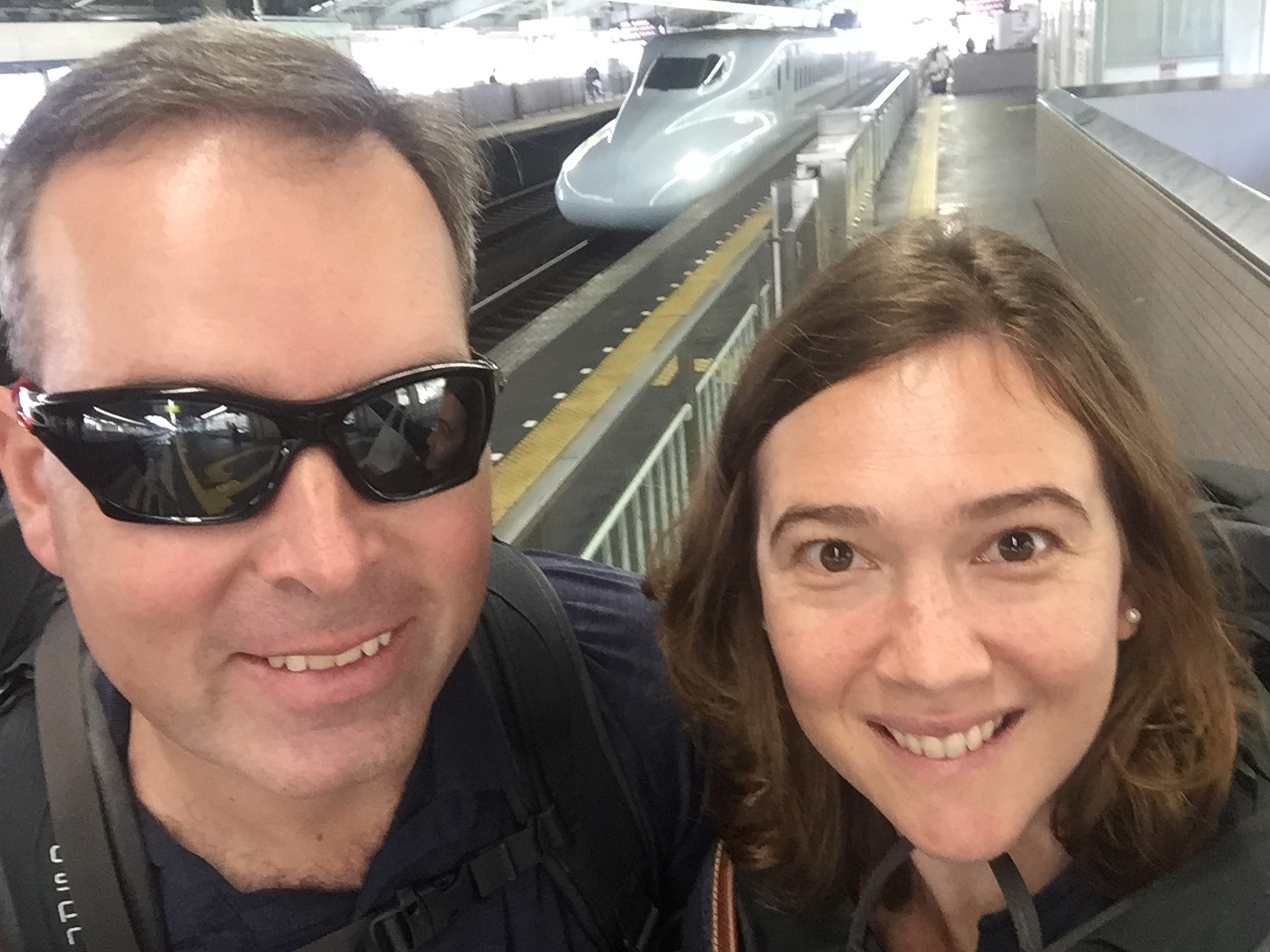
This is actually one of my bugbears about Japan. Everything is just so small! I bump my head on every handle or hold bar on the bus. I stoop to my knees to operate an ATM. I bow to get in every doorway. I have the perfect view of my belly button as opposed to my face in every mirror. And worst of all, the beds are all half size. I realise the problem is all mine in this country – but it does get annoying.

Ok rant over. Our hotel was in Gion, the famous geisha district, down a small alleyway. Yes, it was also a ryokan and yes, we had to sleep on the floor. But the owners of the hotel were so incredibly friendly and kept bringing cake, fruit and bread to our room, so all was forgiven.
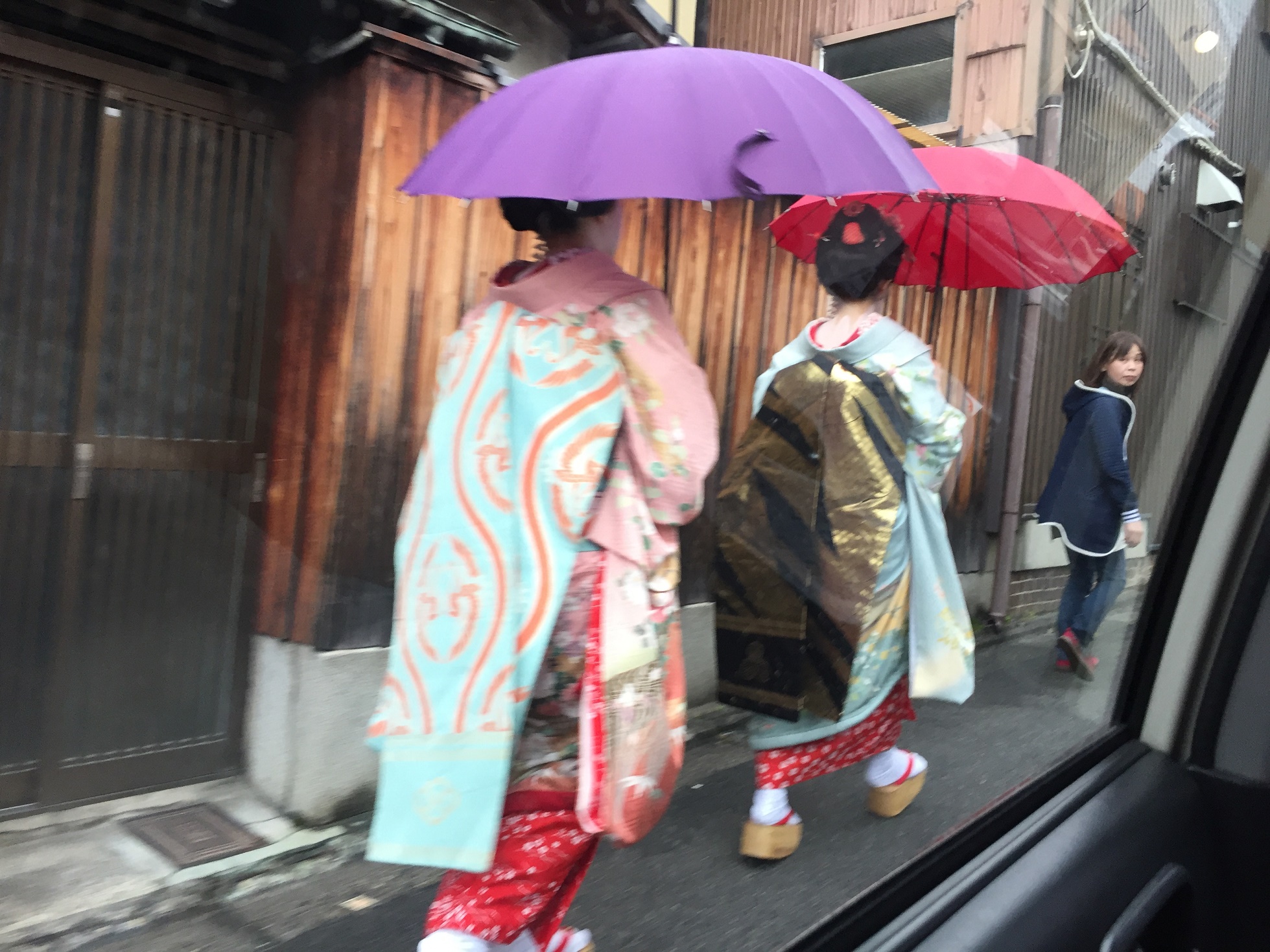
Living in the old geisha district meant we spotted true geiko or maiko every now and again
The cherry blossoms truly exploded in Kyoto. Tokyo only had a few trees in bloom but this was something very different and almost unreal. The blossoms only last a few weeks but it completely changes the city. And it wasn’t only the tourists who stopped to stare; business men, street sweepers, locals, they would all suddenly stop and appreciate the beautiful blooms. We walked down what must be the prettiest street in all of Asia, with a river flowing on one side and the whole sky filled with a different shade of pink and green from the cherries and the willows.
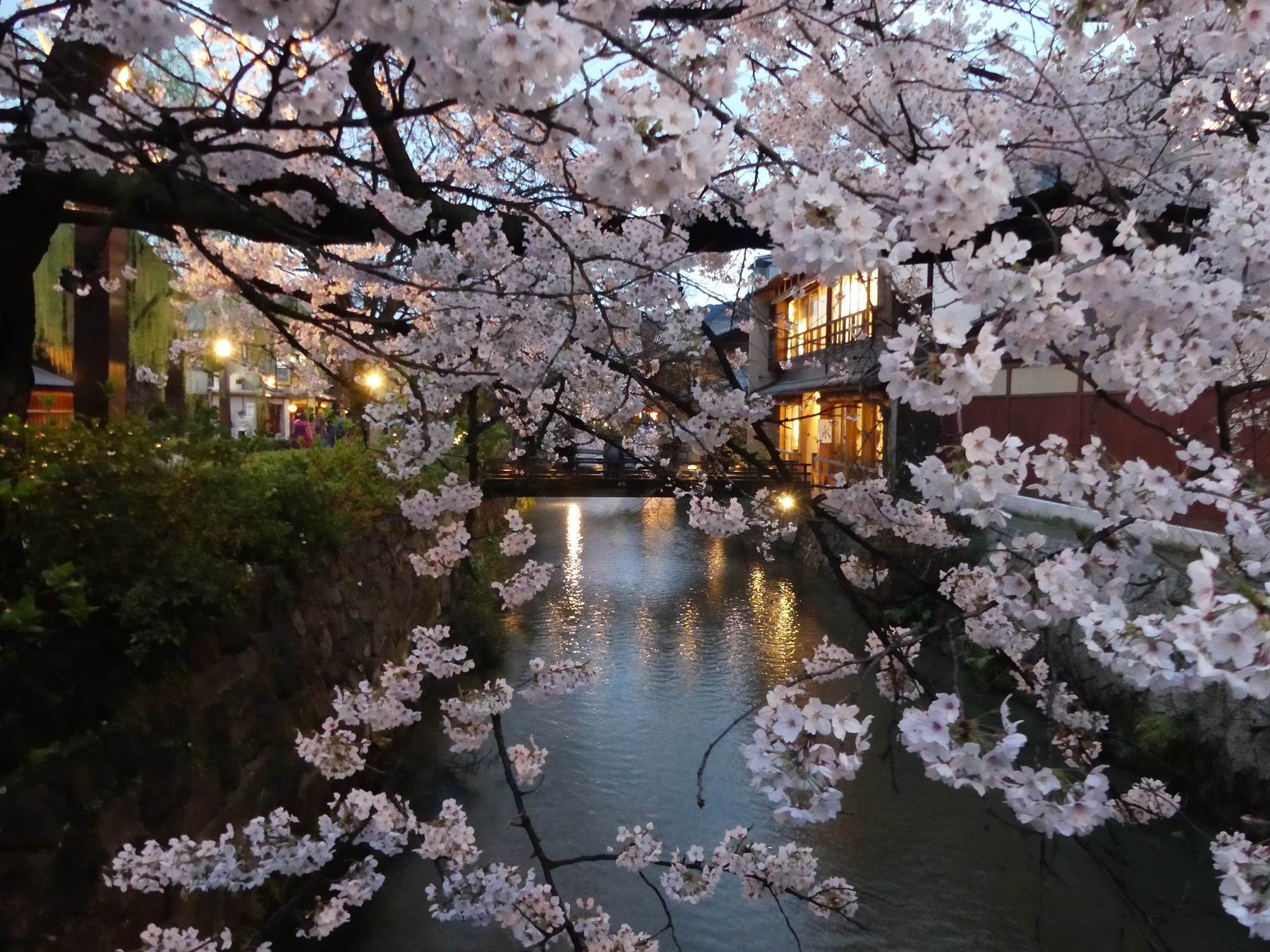
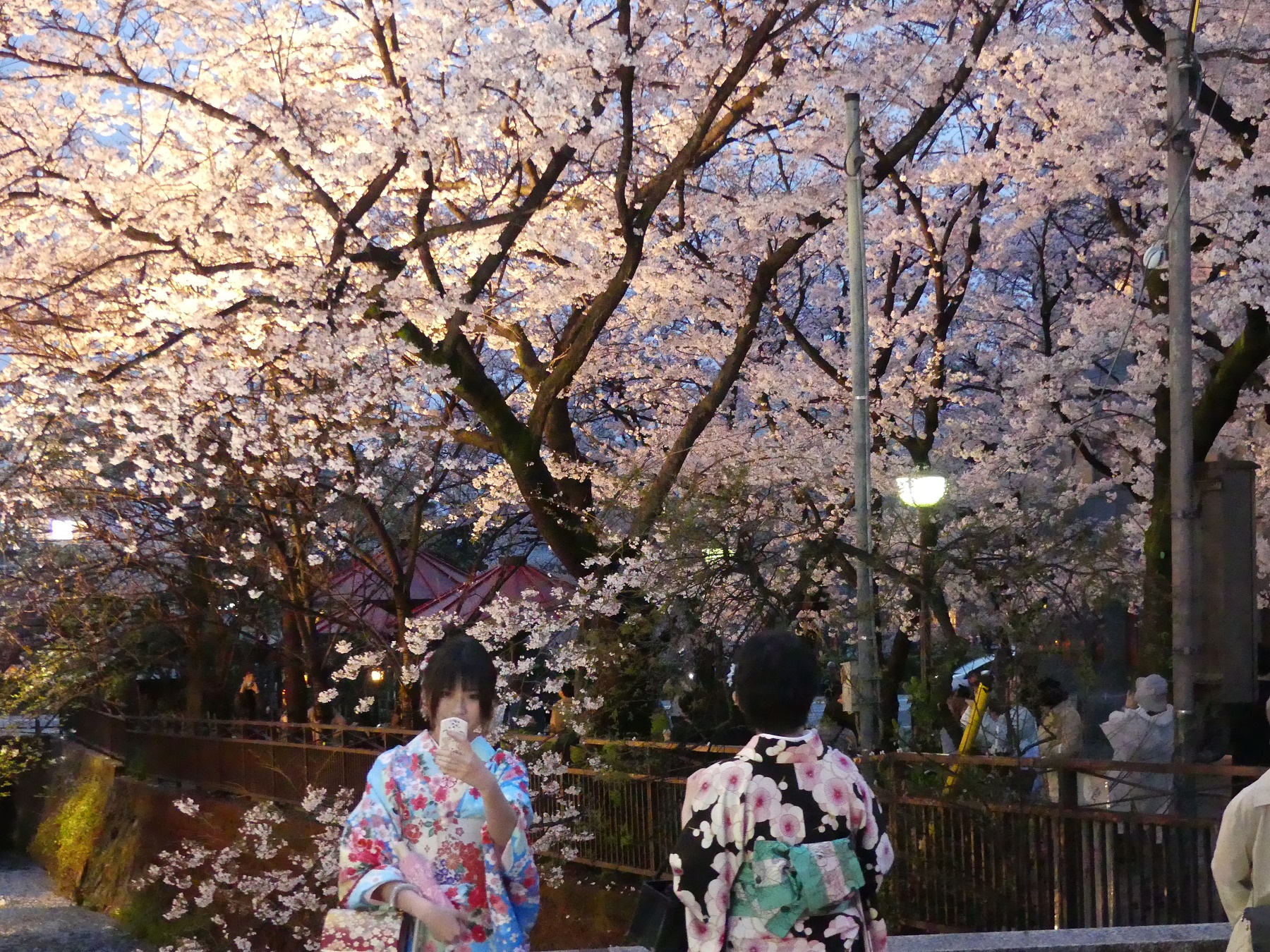
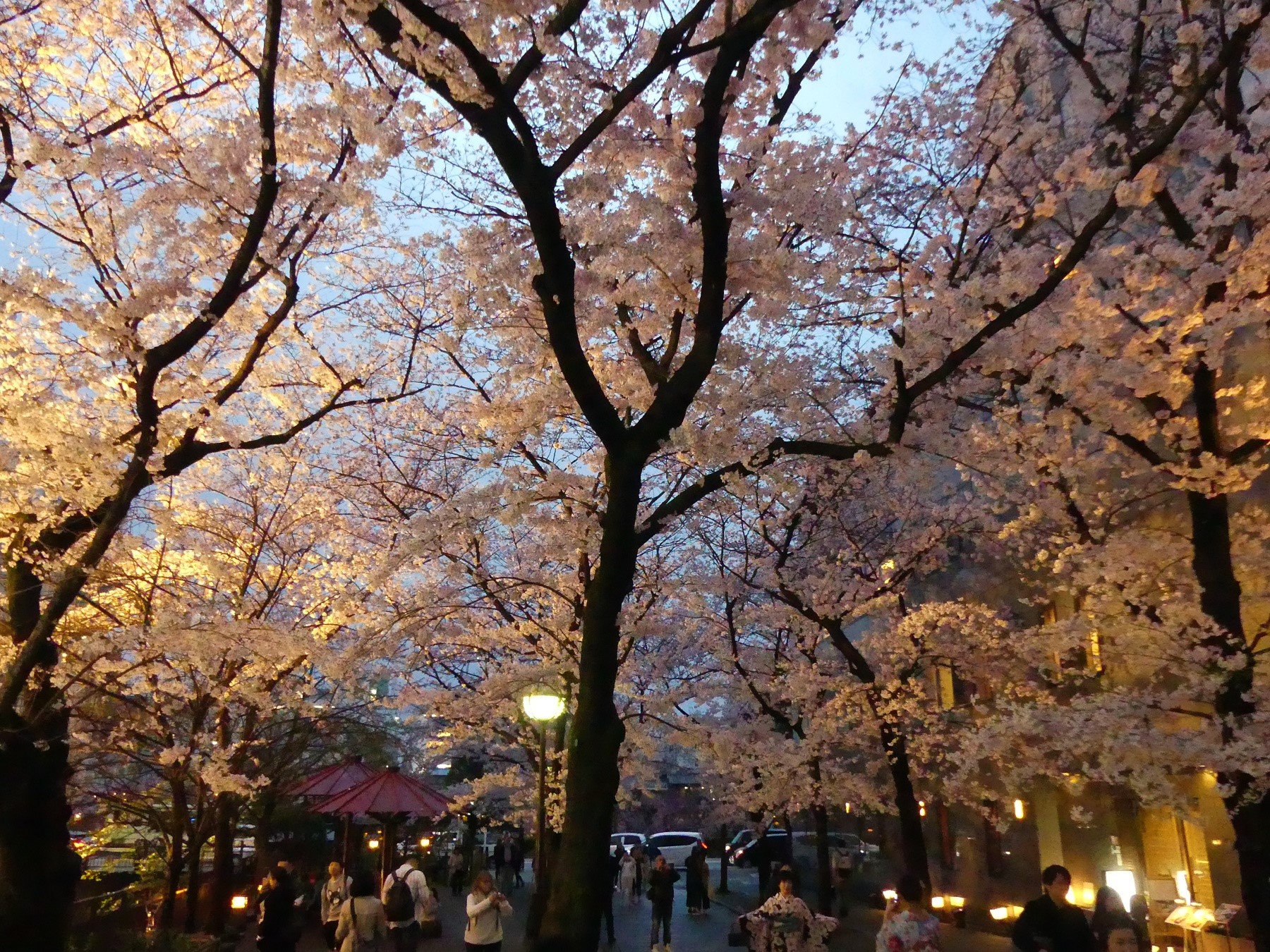
There were so many tourists (mostly from other parts of Japan) all dressed up in beautiful traditional kimonos pretending to be geishas. The women looked very pretty in their costumes; it is such a pity the guys’ traditional outfit was so plain and unimpressive. If you could walk around with a Samurai sword then maybe I could be tempted myself. At least give the blokes a few daggers or something…
Two of the main sites we were both looking forward to see was Fushimi Inari Taisha and the very recognisable bamboo grove in Arashiyama. They did not disappoint.
Fushimi Inari Taisha
One of the iconic images of Kyoto, indeed of all of Japan, is the thousands of vermillion Torii gates at Fushimi Inari Taisha shrine. It was one of the first stops during our visit and unfortunately a bit drizzly on our way there. The main tourist horde (and they are here by the coach load) tends to stay around the cluster of gates on the lower slopes.
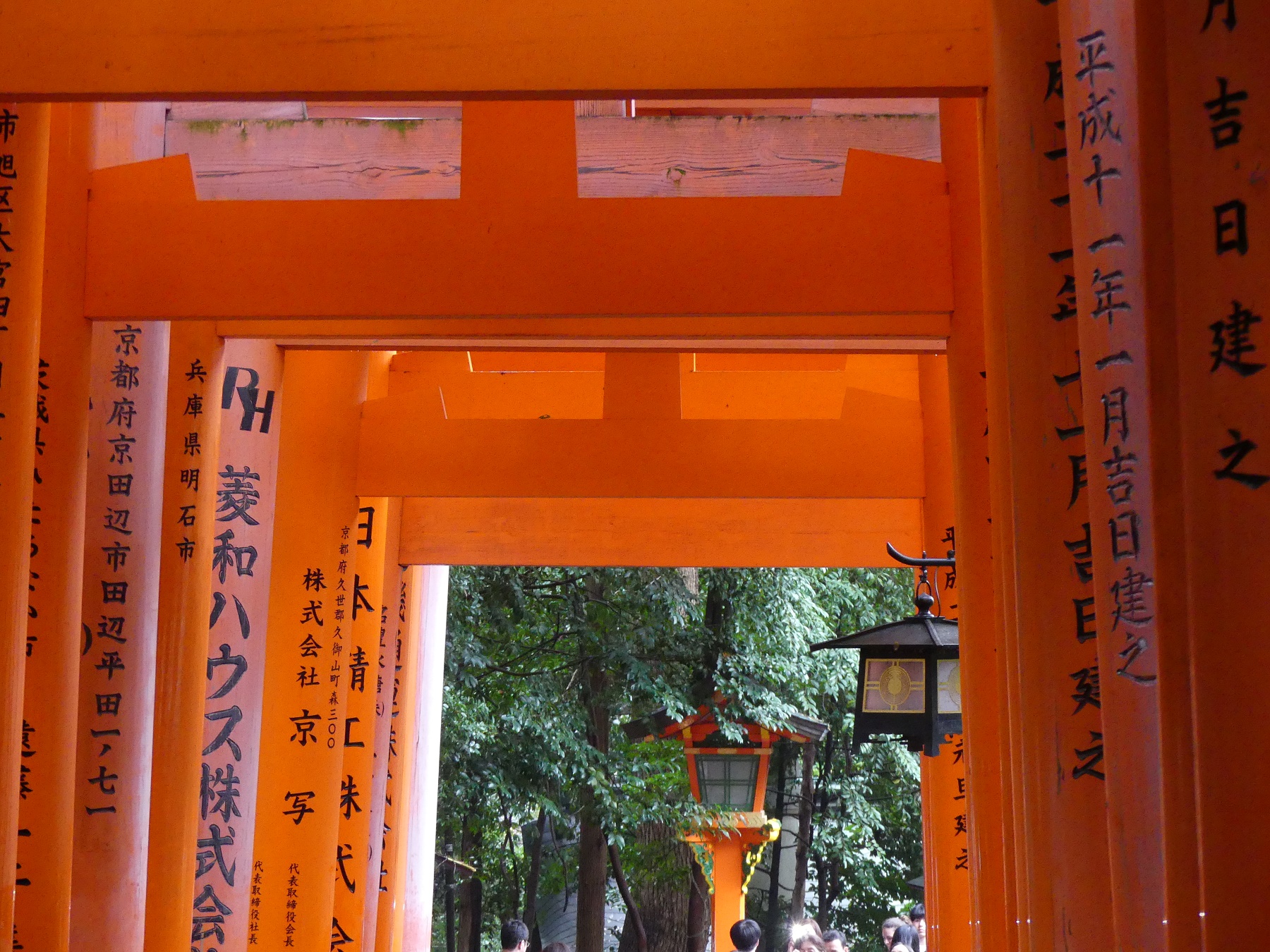
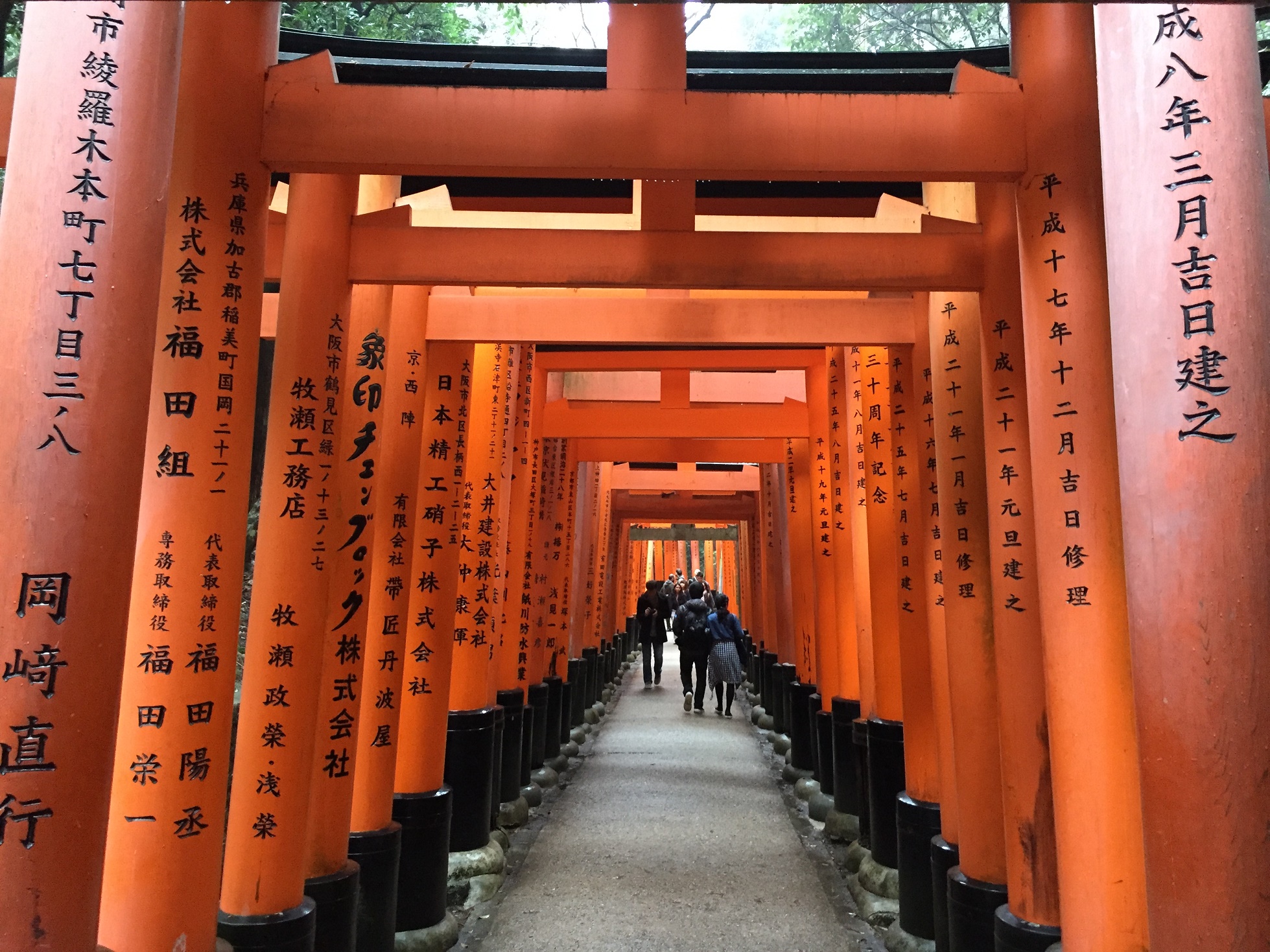
We ventured up the mountain on a lovely walk through the thousands of gates. They have all been erected with words of thanks and wishes for good fortune. The image of thousands of orange gates is almost impossible to capture on camera but equally impossible to forget. It was worth battling the people to get here. But maybe… maybe, if I had a Samurai sword they would have got out my way quicker.
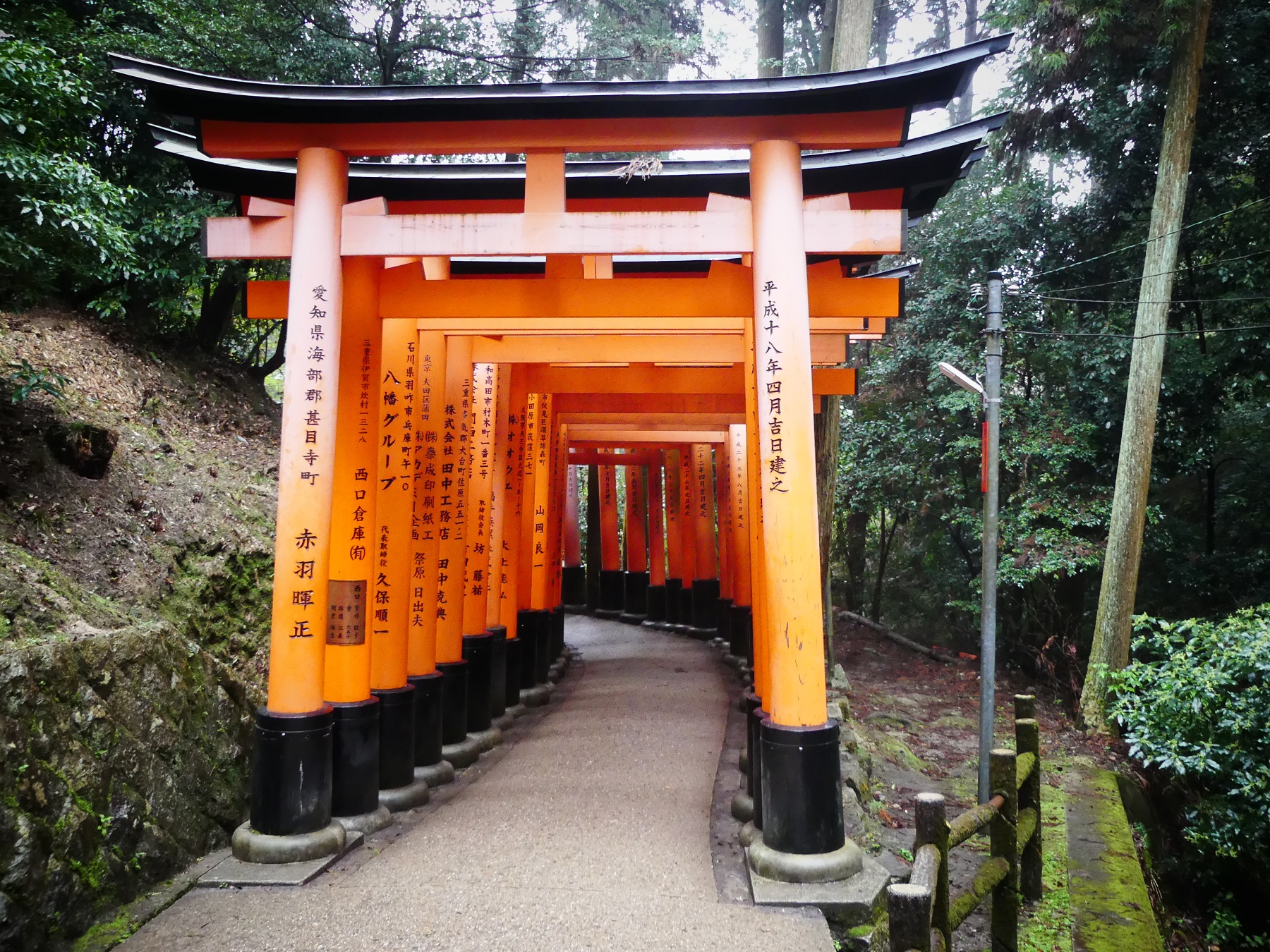
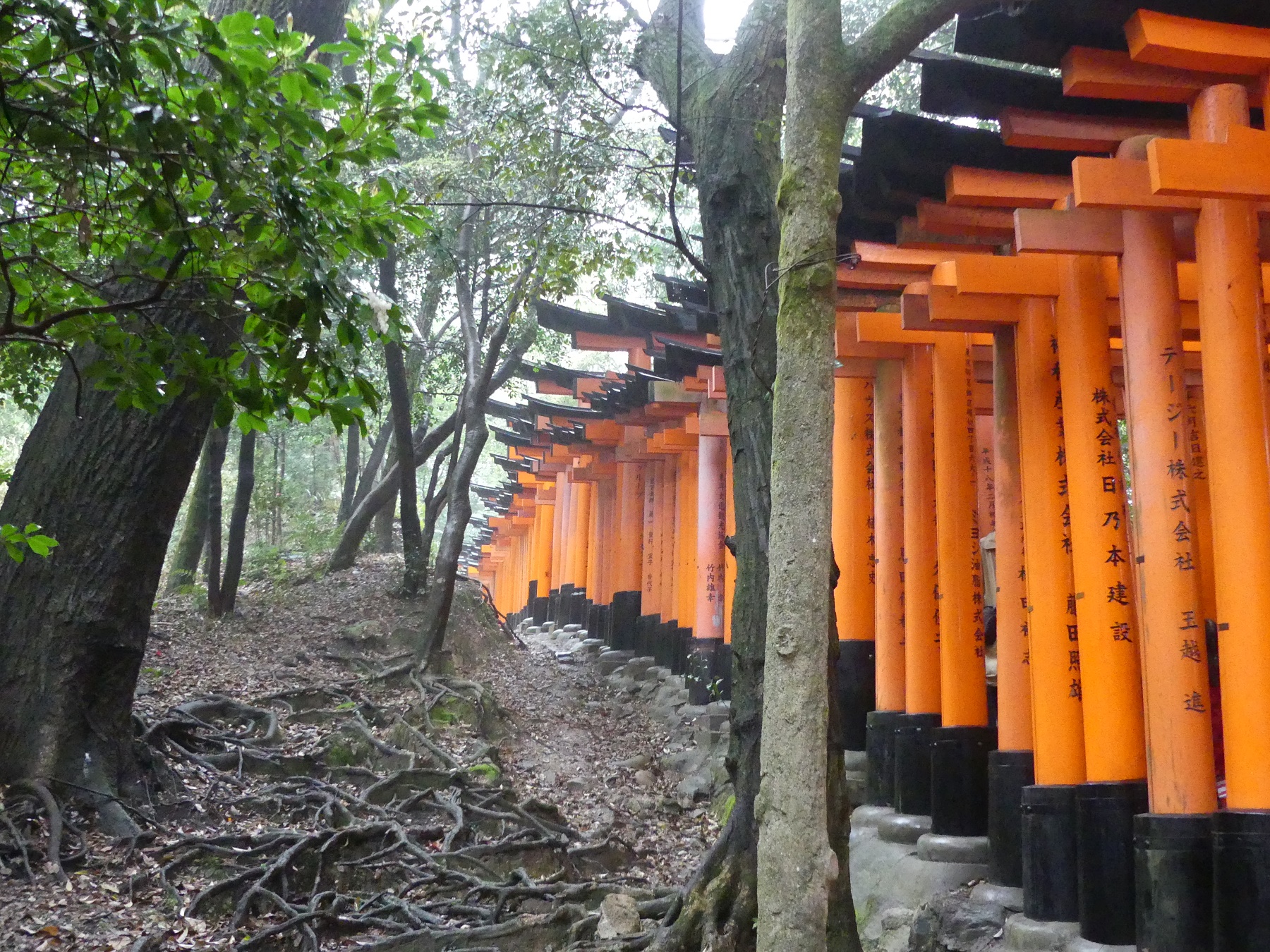
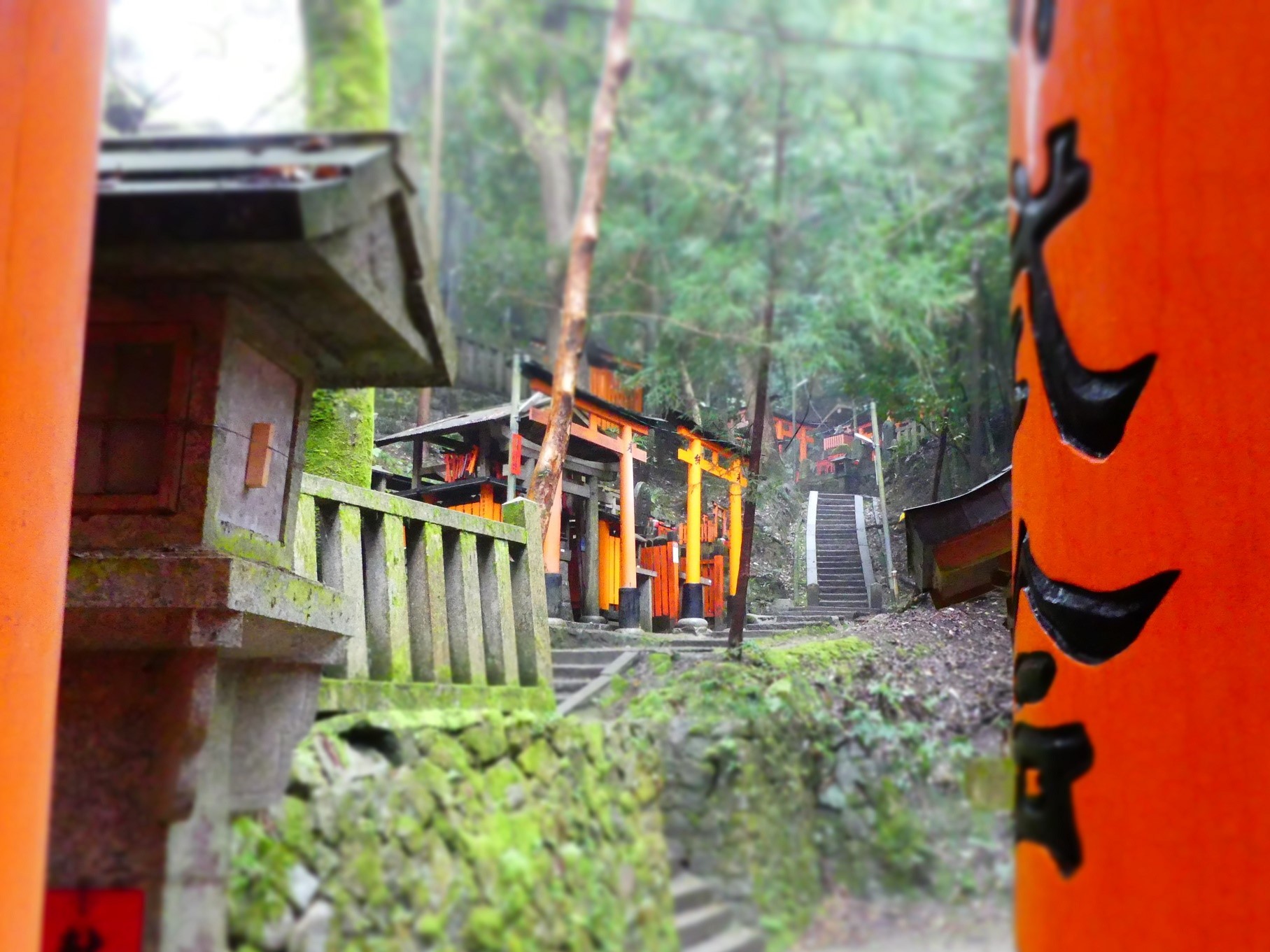
Arashiyama Bamboo Grove
One of the other iconic images of Japan that was worth it is the bamboo forest of Arishiyama. Now this was quite cool. The park surrounding the forest was full of blossoms and we strolled for a few hours. The path through the bamboo forest though was quite eerie. There is something about how the light filters through the grove that is almost spooky. It has a very “Crouching Tiger” feel, or maybe I have just watched too many movies.
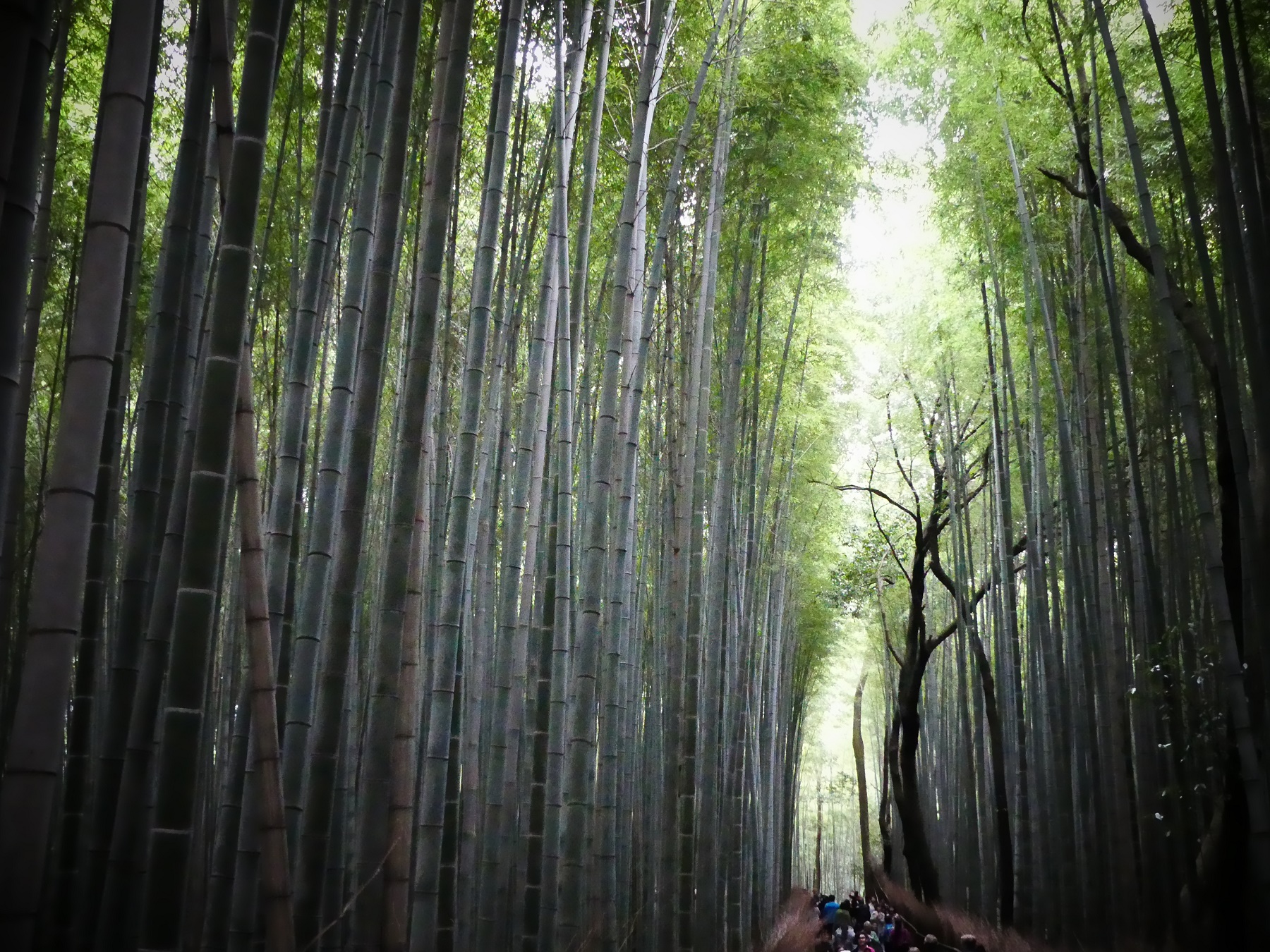
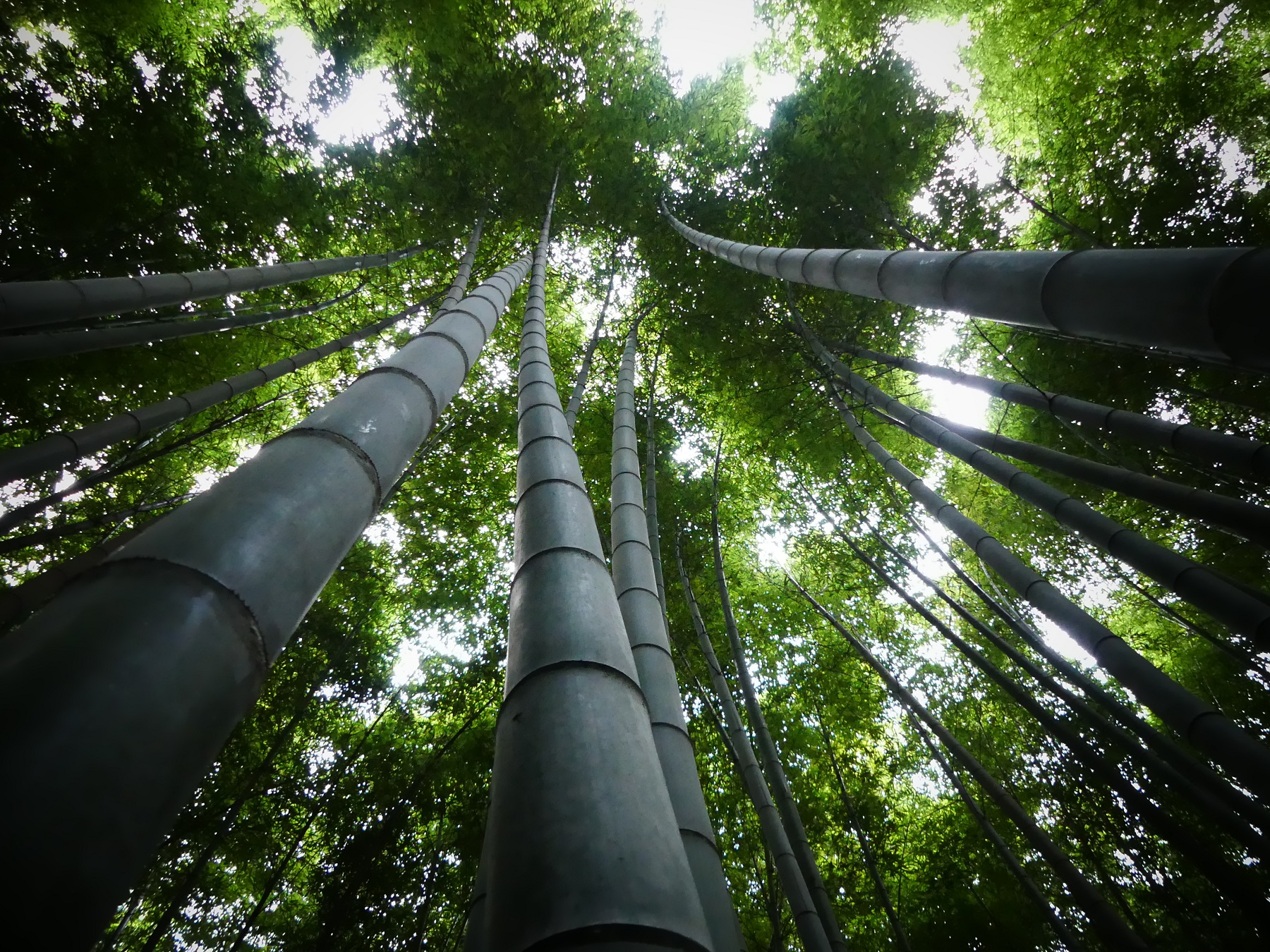
Temples in Kyoto
There are thousands of temples in Kyoto; you cannot turn a corner without bumping into one. However, there are a few that stand out as must-sees which we prioritised, it also meant the coaches did the same thing so it was always crowded.
Sanjusangen-do Temple
One of the first temples we visited was Sanjusangen-do temple – a Hindu temple with very pretty gardens. Inside the temple was 1001 wooden statues of Kannon (Buddhist goddess of mercy) guarded by 28 other terrifying deities. The central figure, a 1000-armed Senju-Kannon was carved in 1254. It is flanked by 500 smaller statues neatly lined in rows. The visual effect is quite striking but sadly photography was not allowed inside the temple.
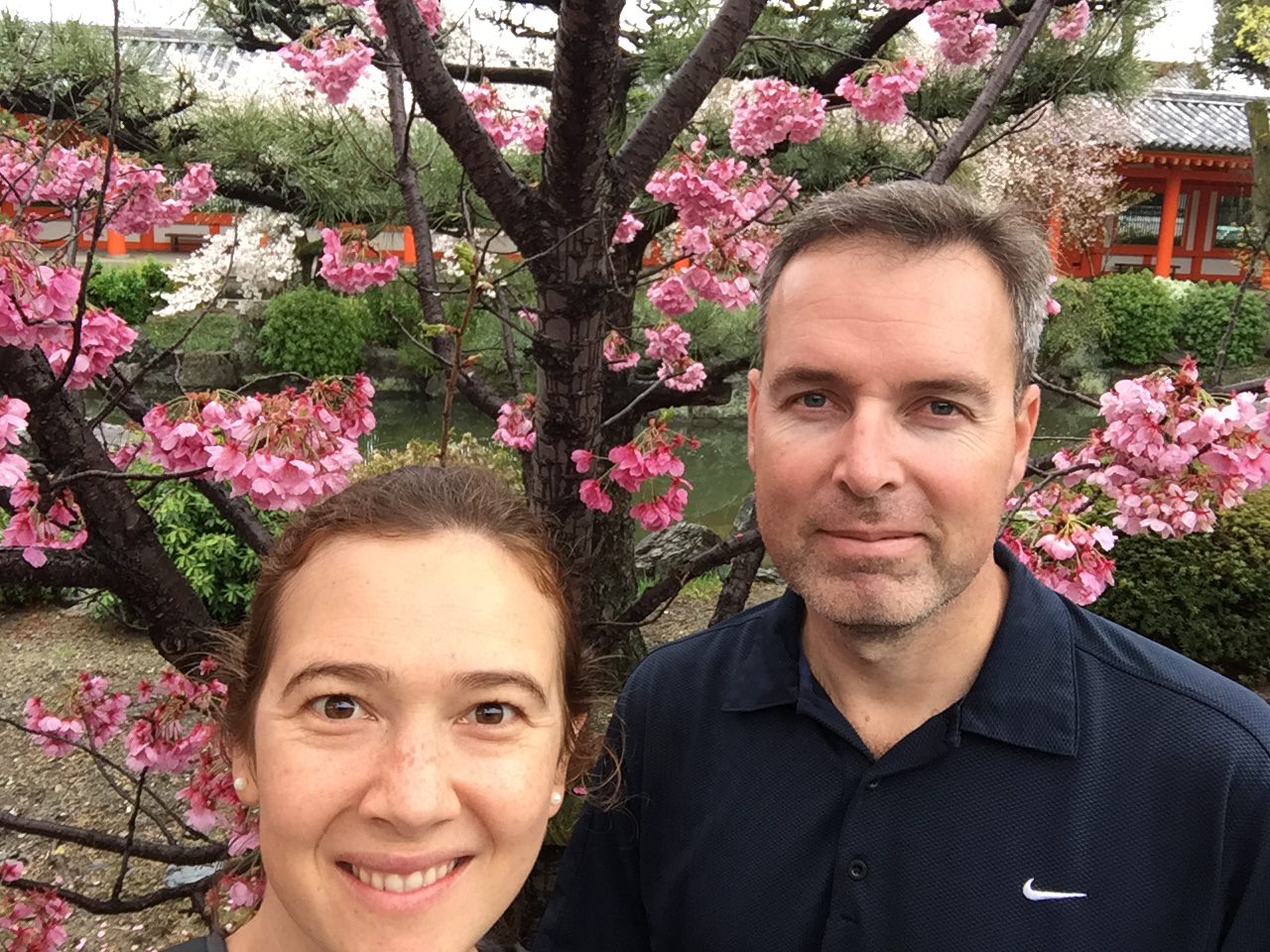
The gardens of Sanjusangen-do Temple

Ginkaku-ji Temple
Ginkaku-ji temple can be found in every tourist book so we trekked all the way to the corner of the city. Unfortunately we were very disappointed. This just seemed like a prime attraction because someone decided to put a picture in the tourist guidebook. Sure, it didn’t help that it was raining while we were there, but it felt like a conveyer belt of umbrellas proceeding in a circle around someone’s garden looking at a house on a lake that wasn’t even that pretty. I spent more time trying to dodge umbrellas than I did looking at the house that you couldn’t even get within 20m of and I just felt cheated by the whole experience. This was supposed to be a Zen temple but I was not feeling any Zen at all. It just seemed like a quick get-rich scheme and worst of all, it was working a treat.
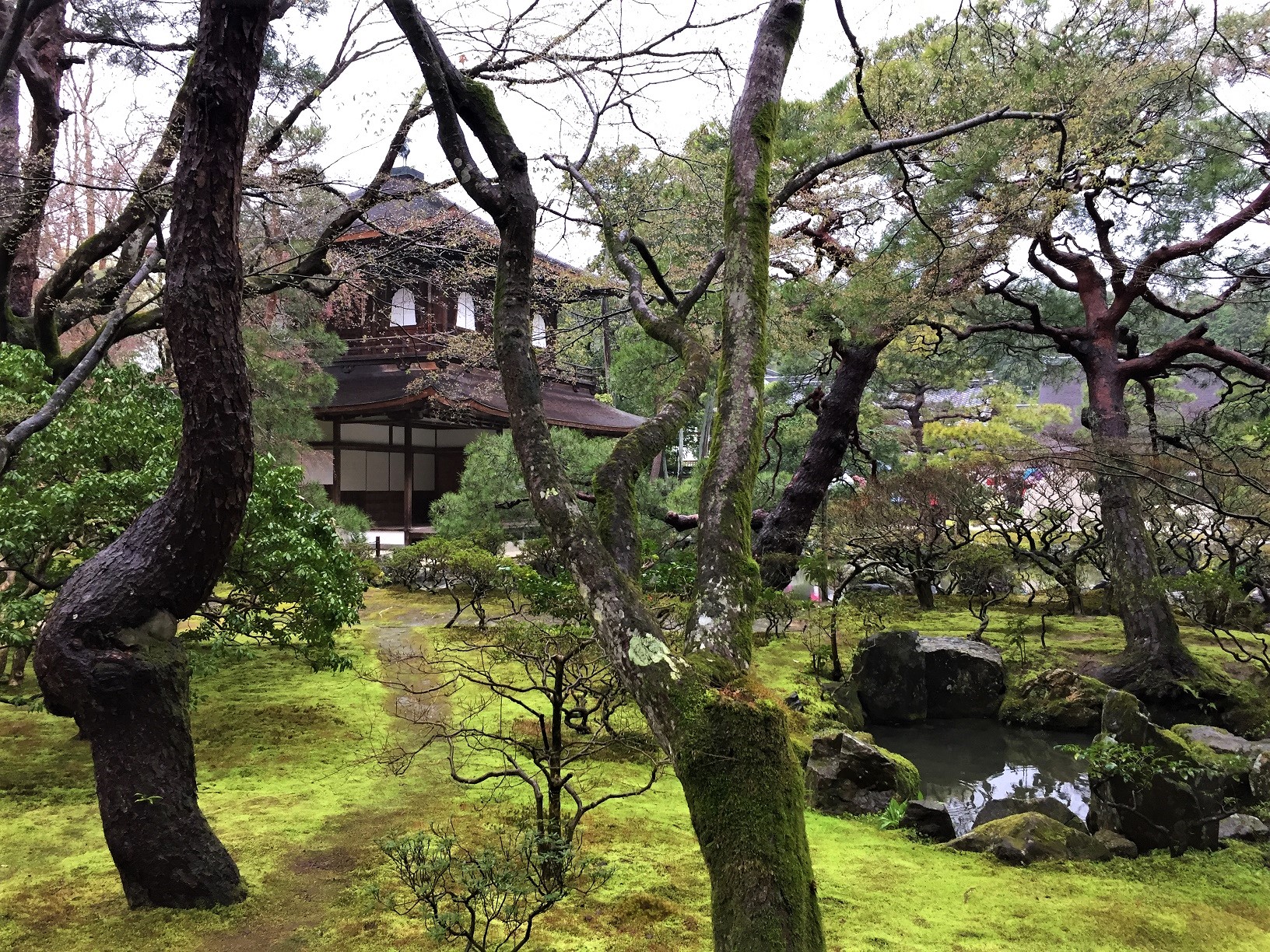
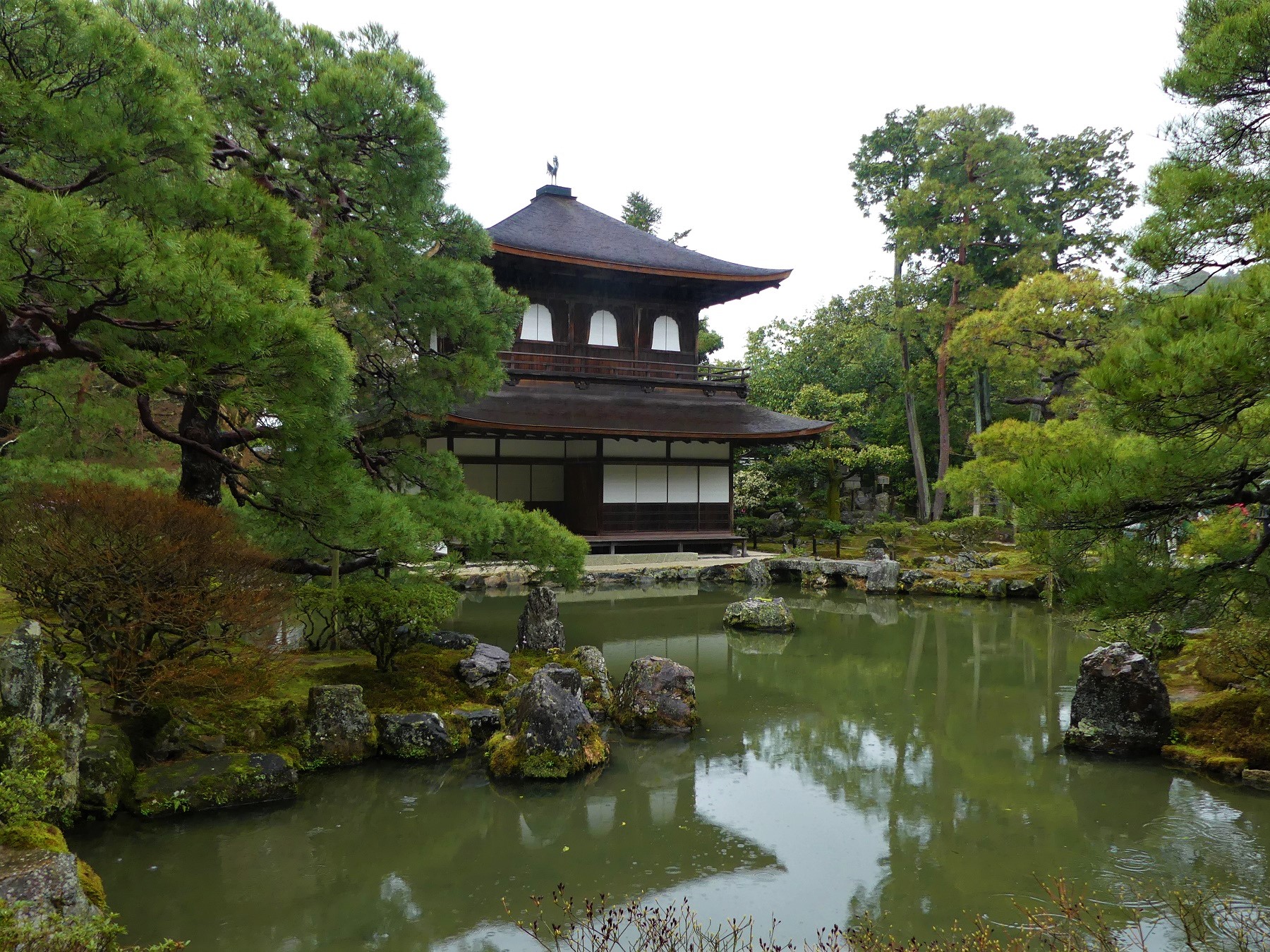
Kinkaku-ji Temple
We travelled to the other side of Kyoto to Kinkaku-ji Temple – the gold pagoda. Like it’s similarly named “cousin”, Ginkakuji, it is also a Zen temple. We couldn’t enter this temple either, but at least it was beautiful to look at from across the water. The top two floors of the pagoda are covered in gold leaf and do look quite stunning.
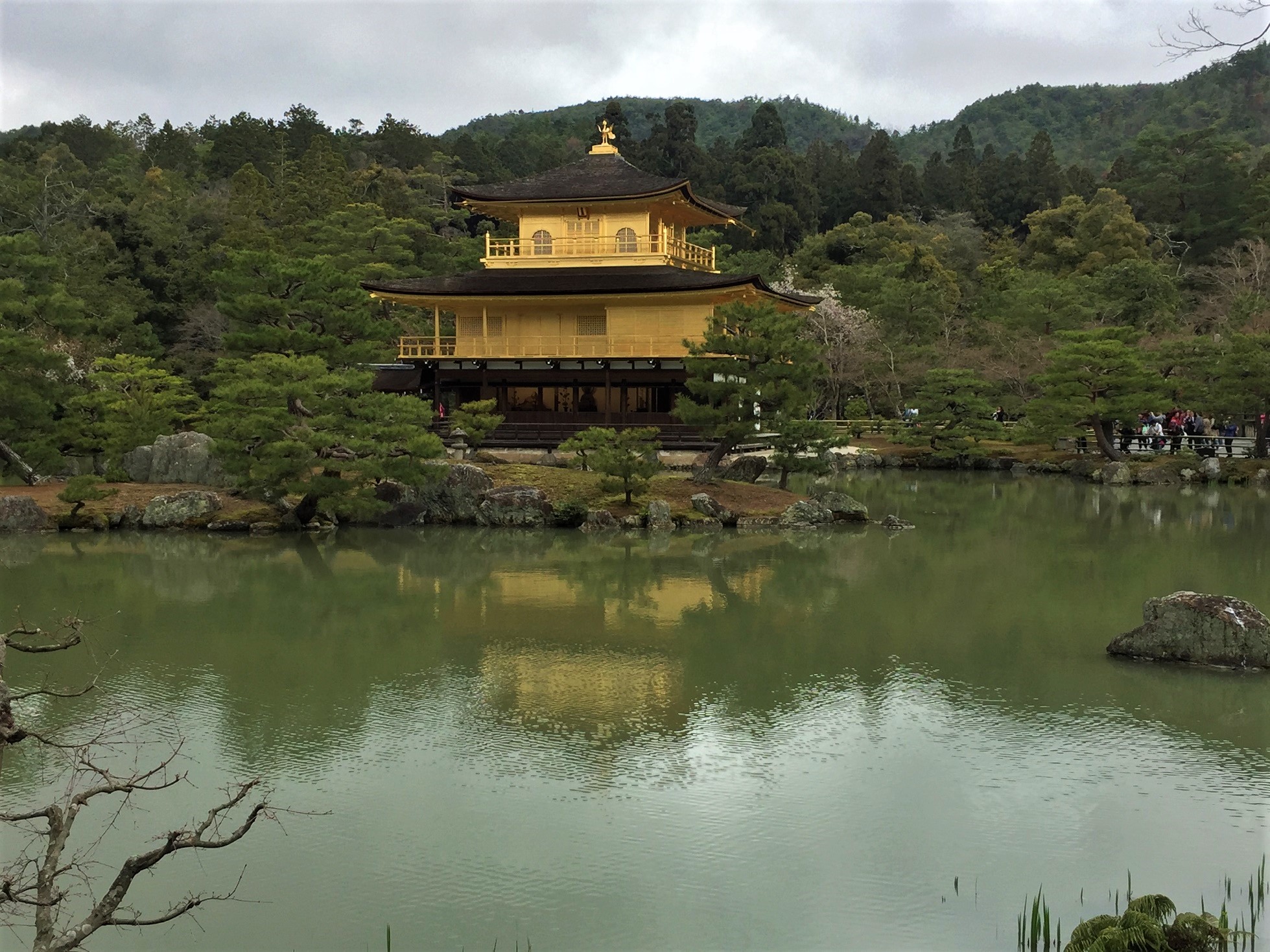
Throughout our time in Japan, I couldn’t help but feel it is simply trying to hold onto the idea of what we think Japan is like. To be honest, most of the Japan I have seen is not particularly pretty. Everything in the city and much of the countryside from the train window looks like something from the 60s. Perhaps it was because of bombing in the war and the rebuilding in the 50s and 60s, but most of it is run-down. I liked Kinkakuji because it had that authentic “old Japanese” feel to it, but the reality is that this ideal does not exist in the cities anymore.
Experiencing a Maiko performance
Our hotel had organised a maiko performance on our second evening. In addition to watching her dance, we would also be able to spend some time with her and ask her anything we wanted. Maiko are apprentice Geisha (or Geiko as they preferred to be called in Kyoto.) They come from all over Japan to train for five years to become Geiko and today there are only about 70 Maiko in Kyoto and therefore, the whole world. After seeing all the “fakes” dressed up in their pretty outfits, this was the real thing. And it was strangely fascinating. Her dance was beautiful and she was so precise in all her movements.
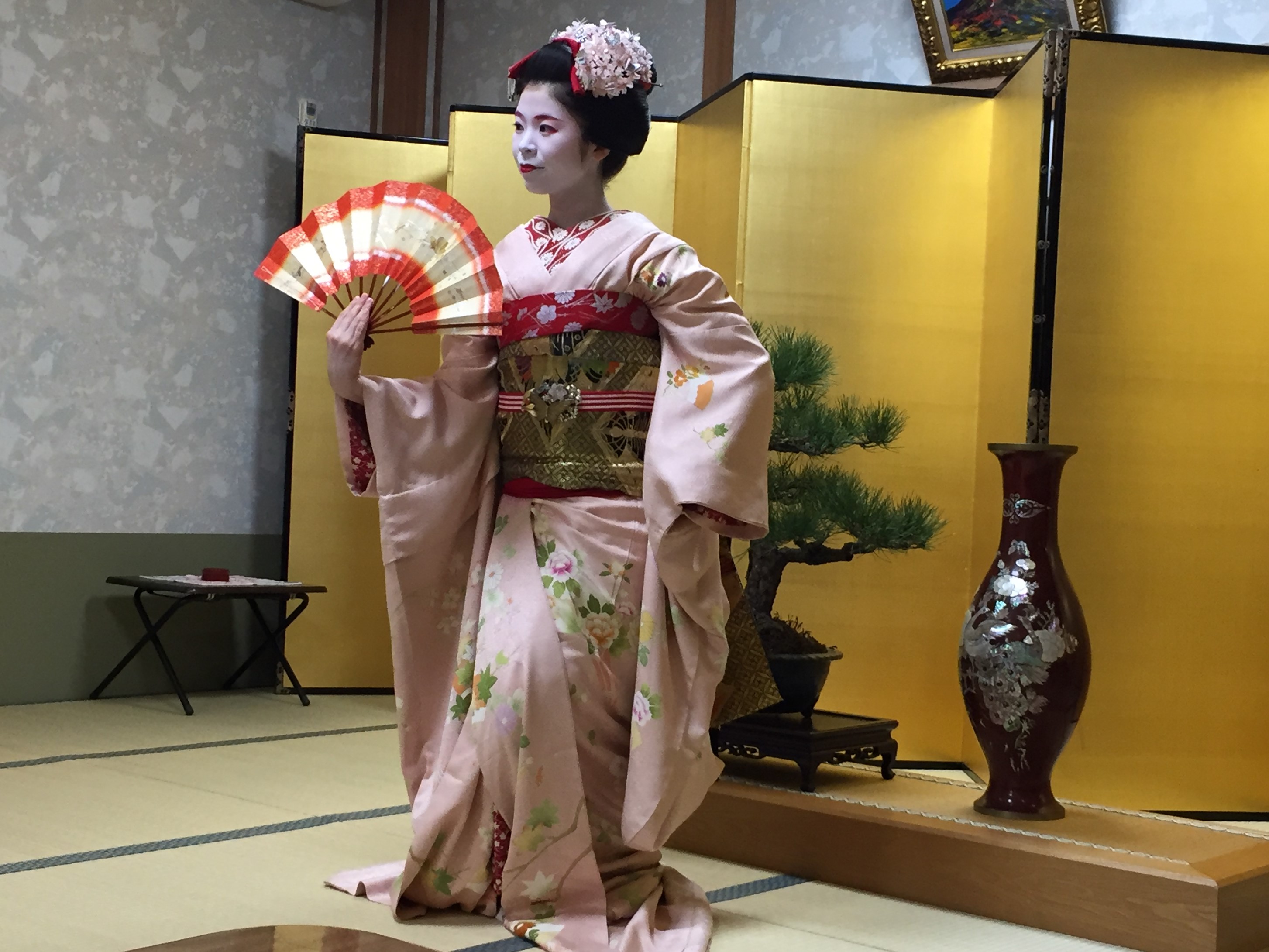
Admittedly, the dance was not my favourite thing and the music did grate a bit after a while but the most interesting bit was chatting to her. “How long does it take to do all that makeup? How heavy is the Kimono? Why did she want to be a geisha? What is her favourite part of the training? How does she sleep with that hairdo? Does she get to take a holiday from it all?” She gracefully answered everything we threw at her. The short version answers: “2-3 hours; about 7kg in winter and 5kg in summer; dancing; with a special pillow (they redo their hair once a week); only five days holiday every year. Interestingly, because of the solitary life they lead during training, they don’t have any friends other than their fellow trainee Maiko and don’t have any contact with the outside world due to no internet or phones.
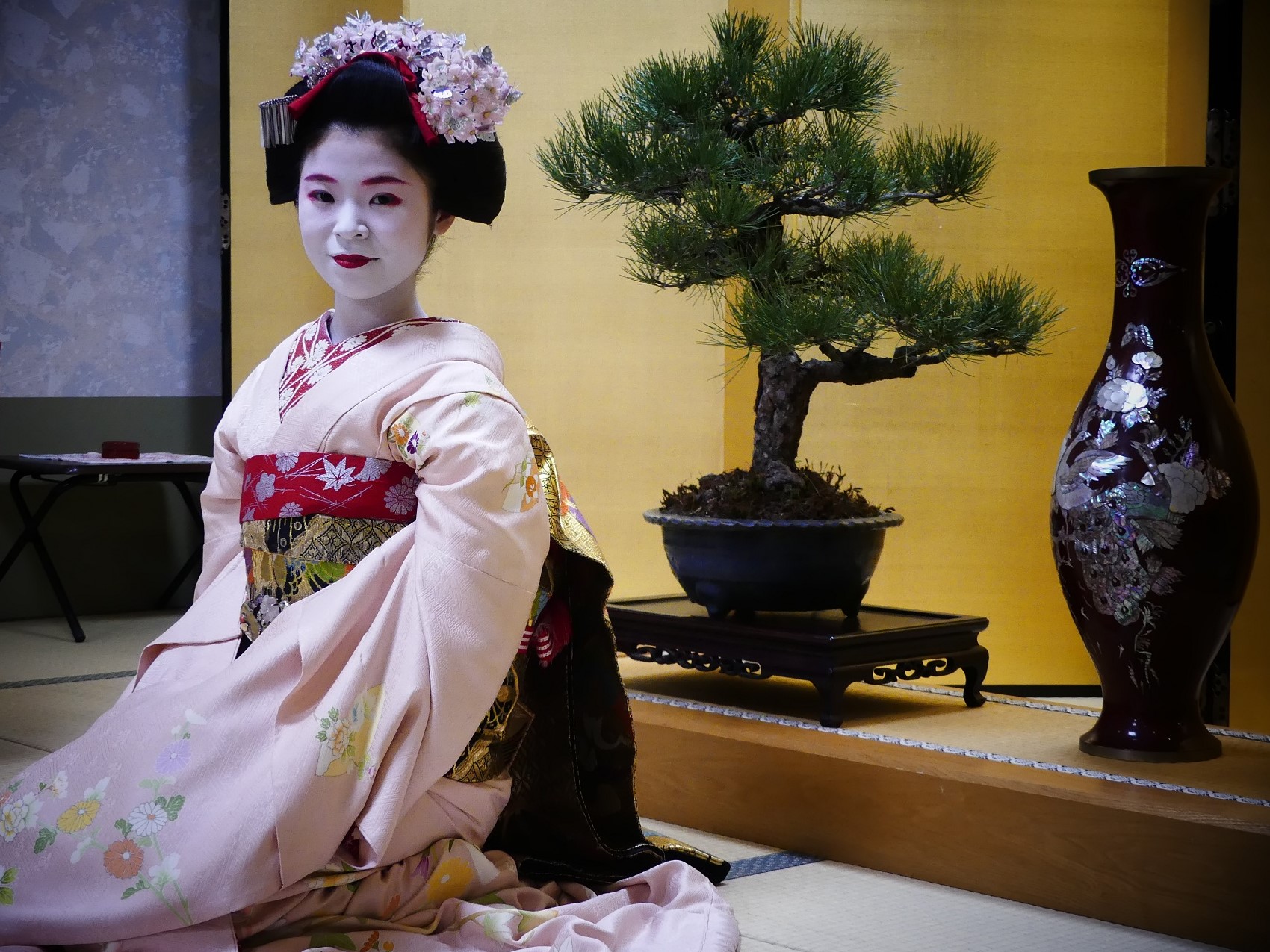
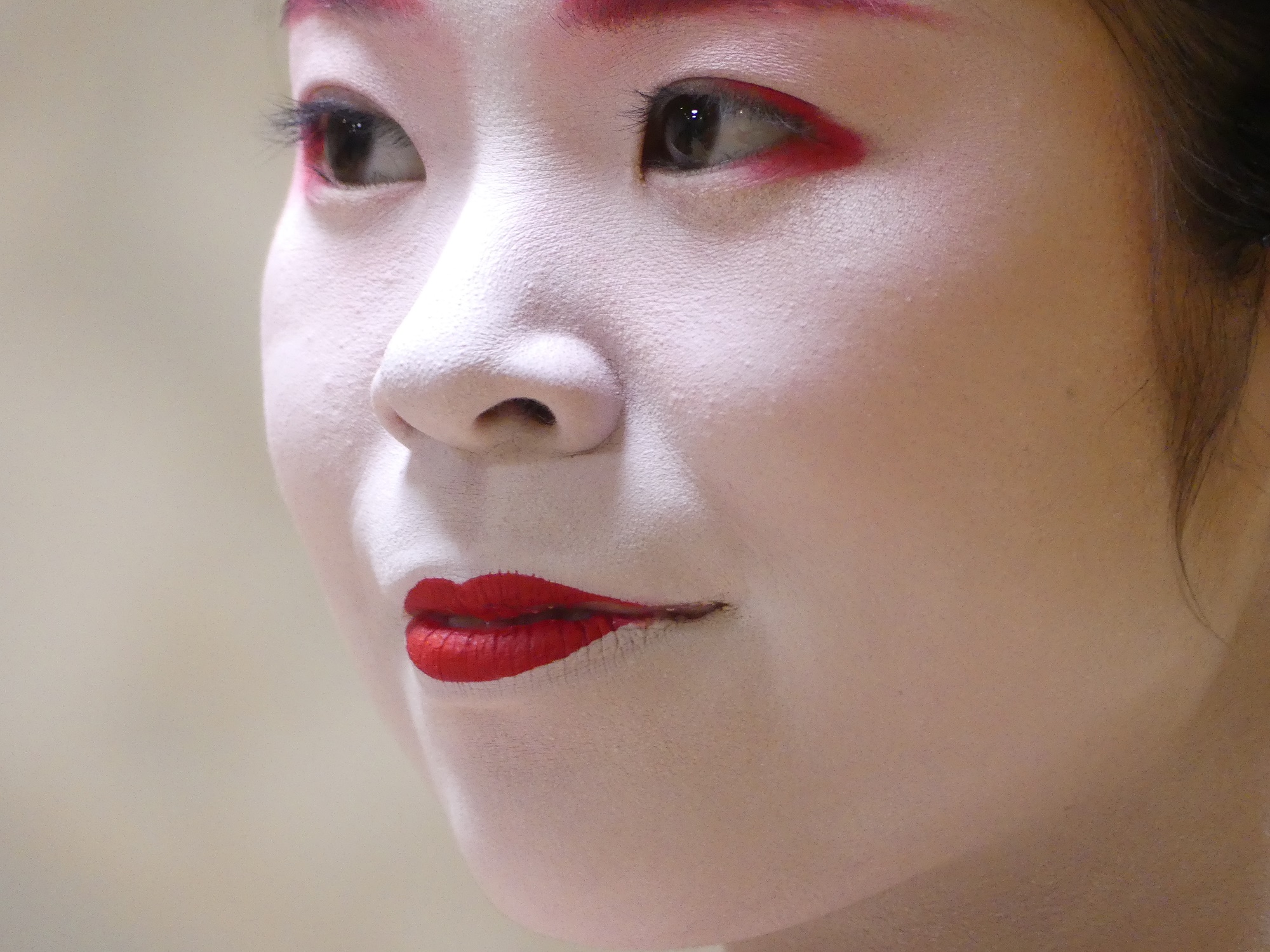
We have really enjoyed our time in Kyoto. I was here a few years ago and it has changed so much I cannot even recognise a single place from a decade ago. I am glad I came back.
